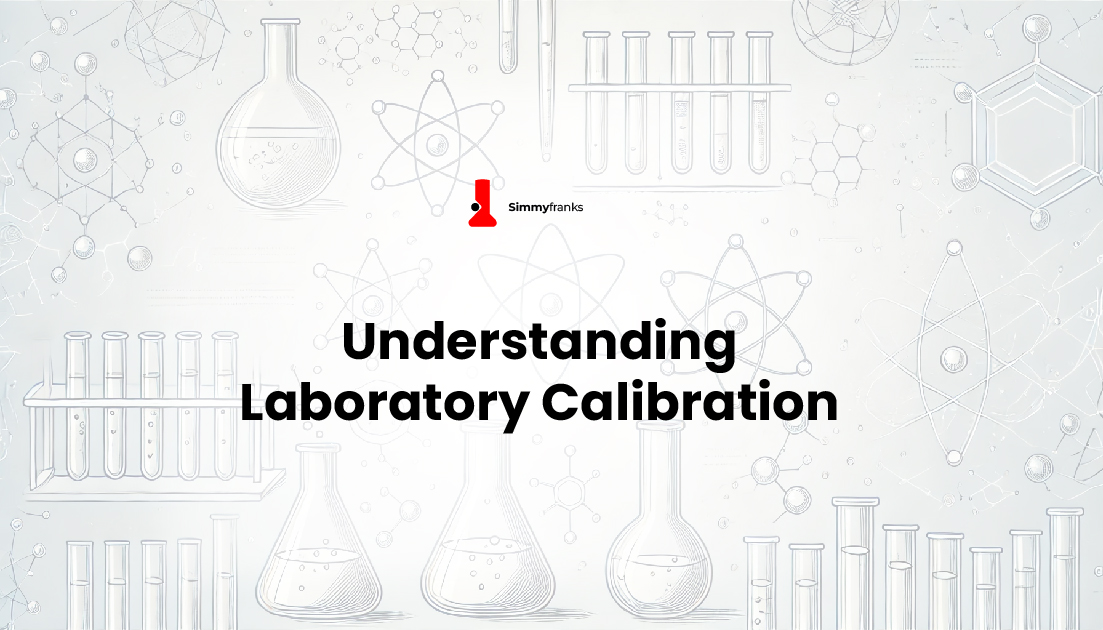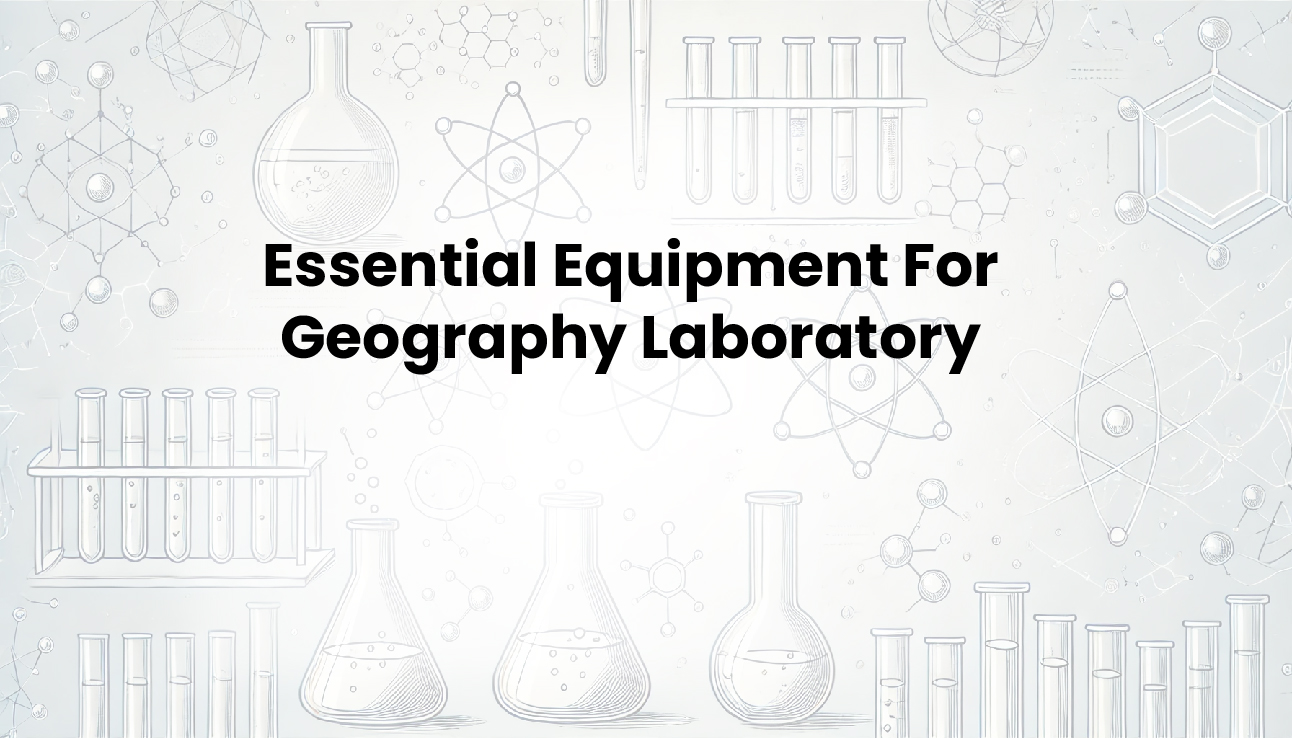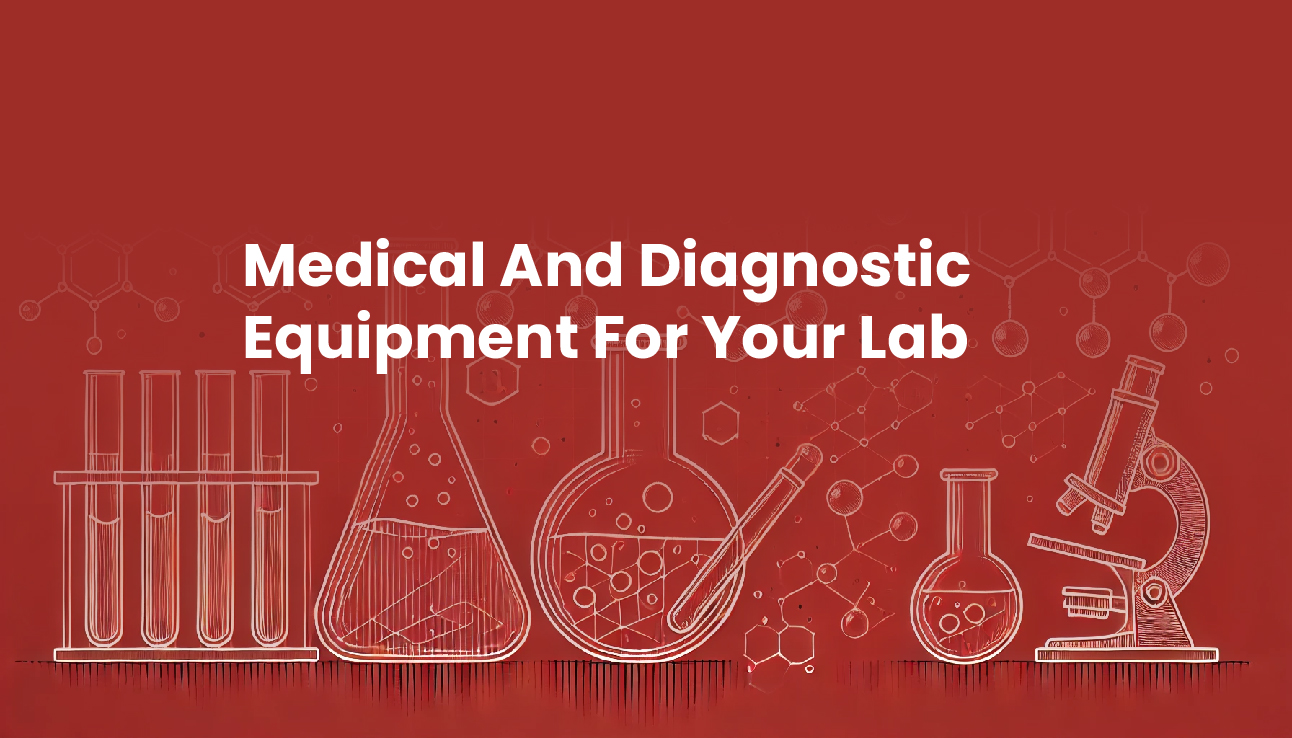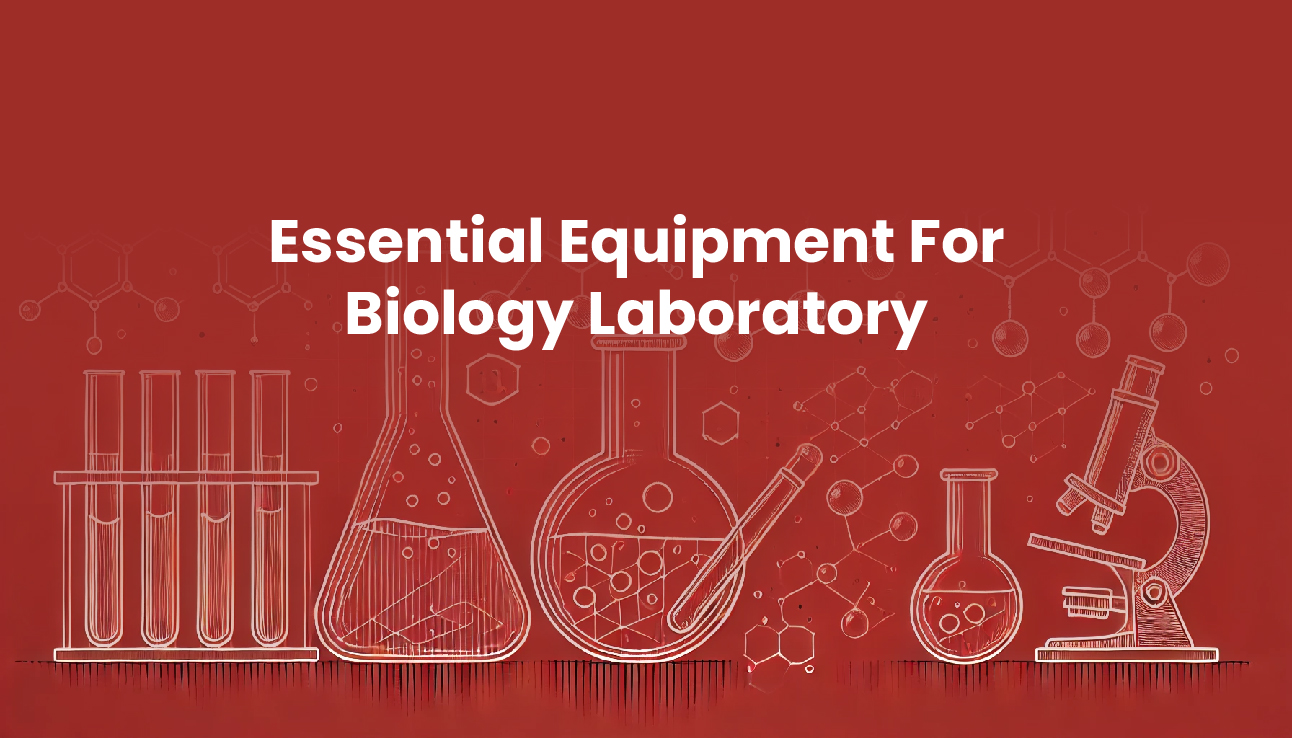Physics laboratories are essential spaces for conducting experiments, analyzing data, and furthering our understanding of our natural world.
To ensure that experiments are conducted accurately and safely, it is important to have the right equipment on hand. In this article, we will be highlighting essential equipment for a physics laboratory. We will also be looking at the uses and best practices of these laboratory equipment.
Basic Equipment for a Physics Laboratory
Basic equipment entails the foundational equipment needed to set up or keep a laboratory running effectively. These basic equipment are also commonly found in primary laboratories ( secondary school laboratories). Here are some basic physics equipment:
Measuring tools:
-
Ruler, calipers, and micrometer:
In a physics laboratory, these instruments are used for measurement purposes:
Ruler:
- Used for measuring lengths, widths, and heights of objects.
- Typically marked with units of measurement (e.g., centimeters, millimeters).
- Useful for rough estimates and measurements of larger objects.
Calipers:
- Used for measuring internal and external dimensions of objects.
- Can measure diameters, widths, and depths with precision.
- Available in digital and analog versions.
Micrometer:
- Used for measuring very small distances or thicknesses (e.g., in millimeters or micrometers).
- Typically used for precise measurements of small objects or components.
- Can be screw-based or digital.
By using these instruments, physicists and students can collect reliable data, test hypotheses, and explore the natural world with precision.
2. Thermometer and thermocouple:
In a physics laboratory, thermometers and thermocouples are used to measure temperature and study thermal phenomena, which are crucial parameters in various experiments. Here are their uses:
Thermometer:
- Temperature measurement: Measures the temperature of a substance or environment.
- Calibration: Used to calibrate other temperature-measuring instruments.
- Thermal expansion experiments: Measures temperature changes during thermal expansion experiments.
- Phase transition studies: Measures temperature changes during phase transitions (e.g., melting, boiling).
Thermocouple:
- Temperature measurement: Measures temperature with high precision and accuracy.
- Heat transfer experiments: Measures temperature differences between two points.
- Thermal conductivity measurements: Measures the thermal conductivity of materials.
- High-temperature measurements: Measures temperatures above 1000°C (e.g., in combustion experiments).
Thermocouples have advantages over thermometers:
- Faster response time
- Higher accuracy
- Wider temperature range
- Smaller size
3. Voltmeter and ammeter:
In a physics laboratory, voltmeters and ammeters are essential tools for measuring electrical parameters, understanding circuit behavior, and conducting experiments involving electricity. Here are some of their uses:
Voltmeter:
- Voltage measurement: Measures the potential difference (voltage) between two points in a circuit.
- Circuit analysis: Helps analyze circuit behavior, such as identifying voltage drops.
- Electrical property measurements: Measures emf, terminal voltage, and voltage across components.
- Calibration: Used to calibrate other voltage-measuring instruments.
Ammeter:
- Current measurement: Measures the flow of electric current (amperage) in a circuit.
- Circuit analysis: Helps analyze circuit behavior, such as identifying current paths.
- Electrical property measurements: Measures current through components, like resistors and wires.
- Energy consumption measurements: Measures current to calculate energy consumption.
By using voltmeters and ammeters, physicists and students can:
- Investigate Ohm’s Law and circuit behavior
- Measure electrical properties of components and materials
- Analyze and troubleshoot circuits
- Verify theoretical calculations with experimental data
B. Optical equipment:
-
Microscope:
Microscopes are essential tools in physics laboratories, enabling researchers to explore and understand the physical world at the microscopic level. In the physics laboratory, a microscope is used to:
- Observing small objects: Microscopes help study the physical properties of small objects, such as crystals, fibers, and microelectronic components.
- Materials science research: Microscopes aid in examining the microstructure of materials, like metals, alloys, and polymers.
- Optics experiments: Microscopes are used to demonstrate optical principles, such as magnification, resolution, and diffraction.
- Biophysics research: Microscopes help study biological systems, like cells, tissues, and biomolecules.
- Quality control: Microscopes inspect small components, like wires, circuits, and mechanical parts.
- Measuring microdimensions: Microscopes measure the size and shape of small objects, like microelectronic components.
- Studying surface phenomena: Microscopes examine surface properties, like roughness, texture, and defects.
- Educational purposes: Microscopes demonstrate fundamental physics concepts, like wave-particle duality and diffraction.
There are different types of microscopes used in the physics laboratory. They include:
- Light Microscope: Also known as an optical microscope, it uses visible light to illuminate and magnify small objects.
- Stereo Microscope: A type of light microscope that provides a three-dimensional view of the object, useful for inspecting small components and materials.
- Compound Microscope: A high-magnification light microscope used for detailed observations of small objects, like microelectronic components and biological samples.
- Phase Contrast Microscope: A type of light microscope that enhances contrast and visibility of transparent or translucent objects, like biological cells and microstructures.
- Polarizing Microscope: Used to study the optical properties of materials, like crystals and polymers, by analyzing polarized light.
- Scanning Electron Microscope (SEM): An electron microscope that produces high-resolution images of the surface morphology of materials and objects.
- Atomic Force Microscope (AFM): A type of scanning probe microscope that studies the surface topography and properties of materials at the atomic level.
The choice of a microscope depends on the specific research question, sample type, and desired resolution.
2. Spectrophotometer:
In a physics laboratory, spectrophotometers are used to measure the interaction between light and matter, specifically the absorption, transmission, or reflection of light by various substances. The types of spectrophotometers used in physics laboratories include:
- UV-Vis Spectrophotometer: Measures the absorption or transmission of ultraviolet (UV) and visible (Vis) light by substances.
- Infrared (IR) Spectrophotometer: Measures the absorption or transmission of infrared radiation by substances, useful for identifying molecular structures.
- Atomic Absorption Spectrophotometer (AAS): Measures the absorption of light by atoms, used for elemental analysis.
- Emission Spectrophotometer: Measures the emission of light by substances, often used for analyzing atomic and molecular spectra.
- Fourier Transform Infrared (FTIR) Spectrophotometer: A type of IR spectrophotometer that uses Fourier transform techniques to analyze molecular structures.
- Nuclear Magnetic Resonance (NMR) Spectrophotometer: Measures the absorption of radiofrequency radiation by atomic nuclei, used for analyzing molecular structures.
3. Laser pointers:
In a physics laboratory, laser pointers are used for various purposes, including:
- Alignment: Laser pointers help align optical components, such as mirrors, lenses, and beam splitters.
- Beam direction: Laser pointers indicate the direction of laser beams in experiments.
- Optical demonstrations: Laser pointers demonstrate optical principles, like diffraction, interference, and polarization.
- Measurement: Laser pointers measure small distances, angles, and displacements.
- Spectroscopy: Laser pointers excite atoms or molecules for spectroscopic analysis.
Types of laser pointers used in physics laboratories:
- He-Ne Laser Pointer: Emits a red beam (632.8 nm) for general-purpose alignment and demonstrations.
- Diode Laser Pointer: Emits a red, green, or blue beam (650 nm, 532 nm, or 405 nm) for alignment, demonstrations, and measurements.
- Nd: YAG Laser Pointer: Emits a green beam (532 nm) for spectroscopy and material analysis.
- Tunable Laser Pointer: Emits a variable wavelength beam for spectroscopy and material analysis.
- Pulsed Laser Pointer: Emits high-intensity pulses for nonlinear optics and spectroscopy experiments.
C. Safety equipment:
1. Safety goggles:
Safety goggles are a must-have in any laboratory setting to protect the eyes from potential hazards such as chemicals, flying debris, or splashes. It is important to prioritize safety in the laboratory to prevent accidents and injuries.
2. Lab coats:
A lab coat provides an extra layer of protection for the skin and clothing while working with chemicals or equipment that may cause spills or splashes. It also helps to keep the clothing clean and free from contamination.
3. Fire extinguisher:
A fire extinguisher is one of the key safety equipment found in the physics laboratory and any other laboratory. Fire extinguishers are essential as they aid immediate response to fire outbreaks to prevent massive destruction and accidents. Fire extinguishers are usually placed in accessible areas of the building.
Typical intervals for inspecting and replacing fire extinguishers are:
- Monthly inspection: Check pressure gauge, seals, and physical condition.
- Annual inspection: Perform more detailed checks, including weight, leakage, and functionality tests.
- 6-year maintenance: Internal examination, repair, and recharge (for certain types).
- 12-year hydrostatic test: Test the cylinder’s integrity (for certain types).
- Replacement: Typically every 10-15 years, depending on the extinguisher type and usage.
Advanced Equipment for a Physics Laboratory
Advanced physics equipment is usually found in higher laboratories (eg., university laboratories and research facilities). Here are some advanced physics equipment:
-
Particle accelerator:
Particle accelerators are essential tools in physics laboratories, enabling researchers to explore the fundamental nature of matter and the universe.
In a physics laboratory, a particle accelerator is used to:
- Study subatomic particles: Accelerate particles to high energies to understand their properties, interactions, and behavior.
- Conduct collision experiments*: Make particles collide to study the resulting interactions, create new particles, and understand fundamental forces.
- Produce high-energy beams: Generate intense beams for various applications, such as: study material properties and behavior under high-energy conditions, study nuclear reactions, structure, and properties, and also studying fundamental particles, forces, and interactions.
- Test theoretical models: Verify theoretical predictions and models, such as the Standard Model of particle physics.
- Develop new technologies: Advance accelerator technology, materials science, and medical applications.
Examples of particle accelerators in physics laboratories:
- Van de Graaff accelerator: Accelerates electrons or ions to study nuclear reactions and properties.
- Cyclotron: Accelerates protons or ions to study nuclear reactions and properties.
- Linear accelerator (Linac): Accelerates electrons or protons to study particle behavior and interactions.
- Storage ring: Stores particles at high energies for extended periods to study their behavior and interactions.
2. X-ray diffraction machines (XRD):
X-ray diffraction (XRD) machines are used in physics laboratories to:
- Analyze crystal samples: Study the crystal structure, lattice parameters, and defects.
- Investigate material synthesis: Characterize the structure and properties of newly synthesized materials.
- Examine material degradation: Study the effects of environmental factors on material structure and properties.
- Develop new materials: Create and characterize new materials with specific properties.
- Verify theoretical models: Compare experimental results with theoretical predictions.
Types of XRD machines used in physics laboratories:
- Powder diffractometer: Analyzes powdered samples.
- Single-crystal diffractometer: Analyzes single crystals.
- Thin-film diffractometer: Analyzes thin films.
3. Nuclear magnetic resonance (NMR) machine:
A Nuclear Magnetic Resonance (NMR) machine is used in a physics laboratory to:
- Study atomic and molecular structure: Analyze the arrangement of atoms and molecules.
- Investigate material properties: Examine the physical and chemical properties of materials.
- Measure magnetic properties: Study the magnetic behavior of materials.
- Analyze chemical reactions: Understand the mechanisms of chemical reactions.
- Characterize materials: Identify and quantify the components of a material.
NMR machines use magnetic fields and radio waves to:
- Align nuclear spins: Produce a magnetic resonance signal.
- Measure resonance frequencies: Calculate the energy levels and spin properties.
- Analyze resonance spectra: Determine the material’s structure, dynamics, and properties.
Types of NMR machines used in physics laboratories:
- Continuous Wave (CW) NMR: Uses a continuous radio frequency signal.
- Pulsed NMR: Uses short pulses of radio frequency energy.
- Fourier Transform (FT) NMR: Uses mathematical transformations to analyze spectra.
- Solid-State NMR: Analyzes the structure and properties of solids.
- Liquid-State NMR: Examines the behavior of liquids and solutions.
Specialized Equipment for Specific Physics Experiments
1. Cavendish balance:
The Cavendish balance is a classic experiment in physics, providing a deep understanding of gravitational forces and the behavior of objects under torsion. The Cavendish balance consists of:
- Two lead spheres: Suspended from a fiber, forming a torsion balance.
- Torsion fiber: A thin wire connecting the spheres to a mirror.
- Mirror: Reflects a light beam to measure tiny rotations.
- Scale: Measures the twist angle of the fiber.
The Cavendish balance is an essential tool in physics laboratories, allowing researchers to:
- Understand gravitational forces: Study the fundamental force of gravity.
- Measure physical constants: Determine the value of G and other physical constants.
- Test theoretical models: Verify predictions made by theoretical models.
2. Cloud chamber:
Cloud chambers provide a unique visual insight into the behavior of subatomic particles, making them a valuable tool in physics laboratories.
A cloud chamber is used in physics laboratories to:
- Visualize subatomic particles: Observe the tracks of particles like alpha, beta, and gamma rays.
- Study particle interactions: Analyze the behavior of particles in collisions.
- Measure particle properties: Determine properties like charge, mass, and energy.
- Demonstrate radiation effects: Show the impact of radiation on matter.
In a cloud chamber, a supersaturated vapor condenses onto ions created by particle interactions, forming visible tracks.
Types of cloud chambers:
- Expansion cloud chamber: Uses expansion to cool and condense the vapor.
- Diffusion cloud chamber: Employs diffusion to create the supersaturated vapor.
- Charged particle cloud chamber: Designed for charged particle detection.
3. Michelson interferometer:
The Michelson interferometer is a versatile instrument used in physics laboratories for various applications, including:
- Precision spectroscopy: Measures wavelengths and studies spectral lines with high accuracy.
- Laser characterization: Analyzes laser properties, such as coherence, stability, and beam quality.
- Optical testing: Evaluates optical components, like mirrors, lenses, and beam splitters.
- Vibration analysis: Measures tiny vibrations and displacements in mechanical systems.
- Quantum mechanics research: Studies interference, entanglement, and quantum phenomena.
- Length and displacement measurement: Determines small changes in position with high precision.
- Surface topography: Maps surface profiles and measures roughness.
- Optical fiber testing: Characterizes optical fiber properties and transmission quality.
- Astronomical instrumentation: Used in telescopes to study stellar properties and interferometry.
- Fundamental physics research: Tests theoretical models, like special relativity and quantum mechanics.
The Michelson interferometer’s advantages include:
- High precision: Achieves accurate measurements with resolutions down to nanometers.
- Versatility: Adaptable to various applications and experimental setups.
- Non-invasive: Measures properties without disturbing the system or sample.
- Real-time analysis: Provides immediate results and feedback.
By employing the Michelson interferometer, physicists and researchers can advance our understanding of the universe, develop new technologies, and push the boundaries of precision measurement.
Best Practices for Physics Laboratory Equipment
Here are some best practices for physics laboratory equipment:
1. Regular maintenance:
Schedule regular maintenance checks to ensure equipment is functioning properly.
2. Calibration:
Calibrate equipment regularly to ensure accuracy and precision.
3. Proper storage:
Store equipment in a dry, secure location to prevent damage.
4. Training:
Provide users with proper training on equipment operation and safety.
5. Documentation:
Keep accurate records of equipment maintenance, calibration, and repair.
6. Quality Control:
Implement quality control procedures to ensure equipment meets standards.
7. Troubleshooting:
Identify and address issues promptly to minimize downtime.
8. Upgrades:
Stay current with manufacturer updates and upgrades.
9. Environmental Control:
Maintain a stable environment (temperature, humidity, etc.).
10. Inventory Management:
Track equipment and consumables to prevent loss or waste.
11. Safety Precautions:
Implement safety protocols to prevent accidents and injuries.
12. Cleaning:
Regularly clean equipment to prevent contamination and damage.
13. Inspection:
Regularly inspect equipment for wear and tear.
14. Certification:
Ensure equipment meets certification standards (e.g., ISO).
15. User Responsibility:
Assign responsibility to users for equipment care and maintenance.
By following these best practices, you can ensure the optimal performance, longevity, and safety of your physics laboratory equipment.
Get Your Laboratory Equipment From SimmyFranks
The main reason why researchers and students encounter inaccurate results and failed experiments in their work is due to faulty or wrong equipment. If you are looking for a reputable laboratory equipment supplier you can trust to meet your scientific needs, then SimmyFranks is your one-stop destination. At SimmyFranks we believe that for accurate and reliable results in your laboratory, you need to use the right equipment. We offer a wide range of high-quality laboratory equipment, ranging from laboratory furniture to the latest equipment. Our products are sourced from reputable manufacturers and sold at competitive prices
Let’s make your scientific quest a blissful and successful experience.
Essential Equipment for Physics Laboratory: FAQ
1. What are the basic equipment needed in a physics laboratory?
Some of the basic equipment needed in a physics laboratory include a balance for measuring mass, a ruler or calipers for measuring length, a stopwatch for measuring time, and a thermometer for measuring temperature. Other essential equipment includes a spectrometer for analyzing light, a voltmeter for measuring voltage, and an oscilloscope for measuring electrical signals.
2. Why is it important to have a balance in a physics laboratory?
A balance is essential in a physics laboratory for measuring the mass of objects. Mass is an important property in physics and is often used in calculations and experiments. Having a balance ensures that measurements are accurate and reliable.
3. What is the purpose of a spectrometer in a physics laboratory?
A spectrometer is used in a physics laboratory to analyze light. It can be used to measure the intensity and wavelength of light, which is important in experiments involving optics and spectroscopy. Spectrometers are also used in experiments related to atomic and molecular physics.
4. Why is a voltmeter important in a physics laboratory?
A voltmeter is used in a physics laboratory to measure voltage, which is an important property in electrical circuits. Voltmeters are used to measure the potential difference between two points in a circuit, which is essential for understanding the behavior of electrical systems.
5. What is the role of an oscilloscope in a physics laboratory?
An oscilloscope is used in a physics laboratory to measure and display electrical signals. It is used to visualize the waveform of an electrical signal, which is important for analyzing the behavior of circuits and electronic devices. Oscilloscopes are essential for experiments involving electronics and electrical engineering.





